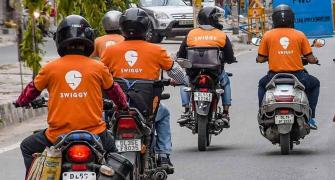Brijesh Mehra, head (corporate clients), ABN Amro, said fund managers were less risk-averse to India, now that a stable government was in power. "Moreover, while the rest of the world is still coming to terms with the economic downturn, the India story still holds," he said.
The India story not only holds, it is getting stronger, going by the spate of GDR (Global Depository Receipt) issues and Qualified Institutional Placements over the last one month.
While nearly $4 billion has been mopped by companies through QIPs, more than $2 billion has come in through GDRs and ADRs (American Depository Receipts). Among the bigger fund raisers have been Sterlite, which picked up $1.5 billion, Tata Steel ($500 million), Tata Power ($335 million) and Suzlon, which managed to raise around $110 million.
Mehra pointed out there was no shortage of money with fund managers. "Individuals overseas continue to save whether through insurance companies or asset management companies, so there is enough money coming in," he said. Money is not just coming in from traditional markets such as the US and Asia but also from Europe.
Vedika Bhandarkar, head (investment banking), JP Morgan, said of late a fair share of the inflows were from continental Europe. "We've seen several new funds participating from countries such as France, Italy and Germany," she pointed out, adding that the trend was visible not just for primary market issuances but in the secondary market, too.
Asians, however, remain the biggest investors, contributing to most of the subscription -- 40 to 45 per cent -- for the GDR issues. Twenty-five to 30 per cent of the money is flowing in from the US and a similar amount from Europe. It's pretty much the same for a QIP, said investment bankers, except that about 10 per cent of the issue would be subscribed to by Indian institutions, so that the US and Europe would be contributing slightly less.
Sanjay Sharma, managing director and head (capital markets), Deutsche Bank, said investors participating in the GDR issuances were mainly long-only funds, as also India-dedicated funds, emerging market funds and BRIC funds and several hedge funds. As for the QIPs, Indian institutions, too, have shown appetite.
For their part, companies have been quick to cash in on the change in the investor sentiment and the abundant liquidity. Pradip Shah, chairman, Asia Fund Advisors, is impressed with the speed and efficiency with which money has been raised. "After the private sector players, it will now be the turn of PSUs to pick up money," he said.
Shah said companies raised equity at a time when stock prices were reasonable so that the equity dilution would not be large. "While the additional equity will help them de-leverage, it would not dilute the earnings too much," he explained. In Tata Steel, for instance, the dilution will be about 9 per cent.
Mahesh Vyas, chairman of Centre for Monitoring Indian Economy, said "With the stock markets now in a better shape, companies are clearly getting a better premium for their stock and the equity will clearly help those firms that need to de-leverage."
Companies are also favouring the GDR route and list in Europe rather than follow the ADR path because the listing requirements in the US are far more stringent. "The ADR route requires more effort both at the time of listing and after that too," Deutsche Bank's Sharma said.








